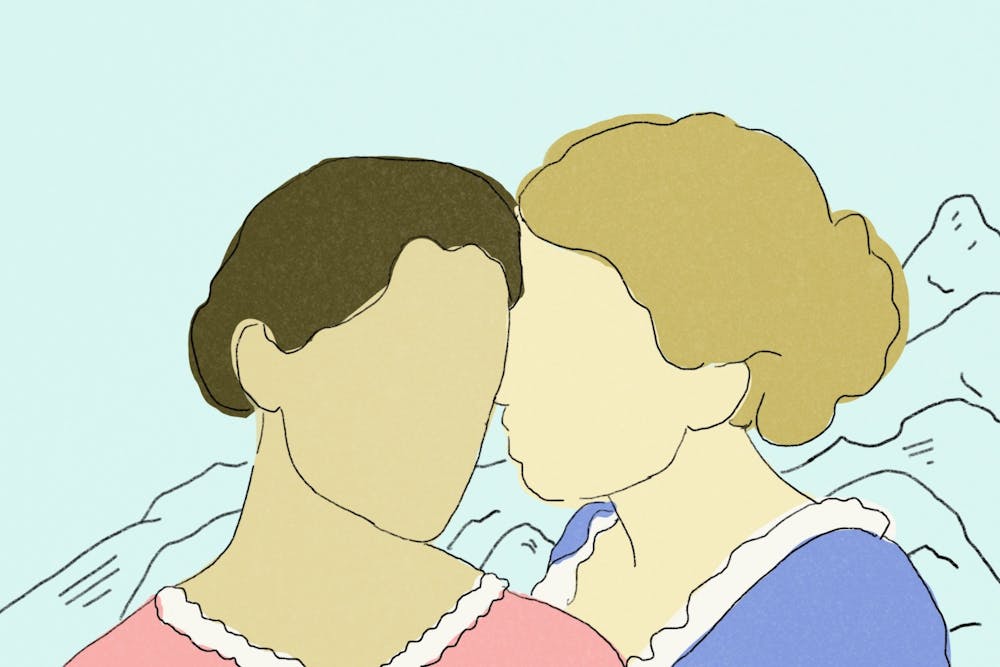There is no question Portrait of a Lady on Fire is a story for women. Although oppressed by their circumstances, there's joy and courage in the daily lives of our two main characters, Marianne (Noémie Merlant), a French painter, and Héloïse (Adèle Haenel), a bride–to–be who is her subject.
Portrait of a Lady on Fire follows Marianne after she's hired to paint Héloïse, who is about to get married. Marianne has to befriend and observe Héloïse in secrecy as the latter refuses to pose for the portrait. Through conversations shot on beautiful cliff sides, discussions of music, and tender moments captured in paint, they eventually fall in love. The film celebrates the love between these women—a kind of love that enriches and brings joy to life–despite how short their relationship lasts.
The women in this film are rarely shy or demure. In the opening shots of the film, Marianne loses her canvases off the side of a boat and immediately jumps off to rescue them despite her heavy dress. She doesn't apologize for her actions, nor does she get chastised. Marianne is also unrepentant and frank about her sex life, a past abortion, and her desires–not only for Héloïse, but for everything else in life. Marianne is the rare female character who demands space, even in a historical film. When she is hungry, she helps herself to the food in the house. She may have to submit her art under a male name, but she claims ownership over her work. She recognizes she's barred from painting nude male models to keep her from succeeding at art, so she does it in secret.
The sex scenes in the film also cater toward the female gaze–there are no shots on specific body parts and most of the sex is skipped entirely. Instead, the focus is on close–ups and tender kisses. Eroticism comes from moments of intimacy and domesticity when Marianne and Héloïse watch and observe each other, revealing their vulnerabilities. This is markedly different from another famous queer French film, Blue is the Warmest Color, whose director, Abdellatif Kechiche, was criticized for its extensive sex scenes.
Portrait of the Lady on Fire also boasts one of the most unique abortion storylines in media, focused on Sophie, the servant employed at Héloïse’s home. Once Sophie reveals she's pregnant and doesn't want the child, there's no vacillation or judgment over whether she's sure about her decision. Neither of the other two women, who are presumably of a different class from Sophie, question her; instead, both help her find someone to perform the procedure.
In the scene where Sophie faces the physical pain of the abortion, she takes comfort from a baby lying next to her. It's an extremely powerful juxtaposition, emphasizing the strength of women. It's also a scene that shows the difference between wanting one’s own child and taking comfort in or liking children.
Portrait of a Lady on Fire marinates in this aspect of women’s lives and forces both its protagonists and audience to witness it. Marianne tries to look away but Héloïse pulls her back and later has her paint the scene. Abortion, something that has influenced women’s lives in so much of history, is something worth seeing, and furthermore, something worth art. It continues establishing the intimate and vulnerable relationship between the artist and their subjects. Overall, this storyline is an exploration of a part of women’s lives often glossed over or demonized.
Throughout the film, there's a reclamation of female work and pastimes. In a lovely shot, Sophie embroiders while Héloïse and Marianne prepare their meal. Embroidery and cooking, though undervalued crafts, are difficult to do and critical to daily life. Women come together to sing in a stunningly haunting harmony, showing the literal beauty of a female voice. Even hobbies like playing cards, reading stories, and playing music–the perhaps silly aspects of a routine–flourish in their artistic potential, their ability to spark joy, and the talent it takes to do them well.
One of the best parts of this film, and one that sets it apart as a queer film, is the lack of homophobia both societal and internalized. Queer women demand space without hesitation, regret, or pain. Perhaps a lot of the homophobia is mitigated because these women are so isolated. However, there's a marked lack of internalized homophobia, no shame or hesitation once feelings are understood. It's refreshing and bold to see a queer film that doesn’t force its protagonists through intense feelings of shame over their sexuality, and it establishes Portrait of a Lady on Fire as unique. It makes the film happier, turning its sad ending into something bittersweet.

